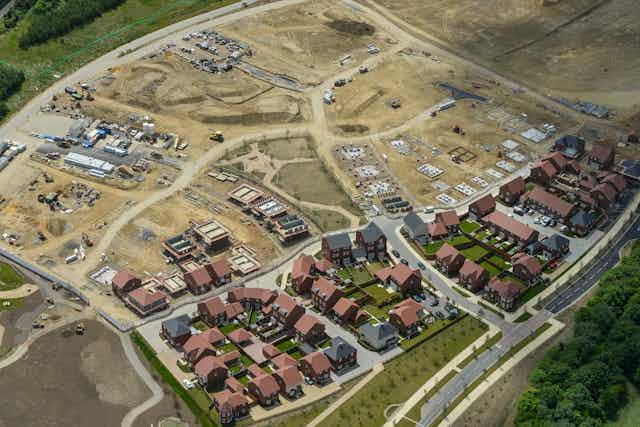The National Health Service plans to develop ten “healthy towns” across England, encompassing more than 76,000 new homes and as many as 170,000 residents. With funding from developers and local authorities, the NHS will experiment with fast food-free zones near schools, safe and appealing green spaces, dementia-friendly streets and digital access to GP services, to try to improve the health of local populations.
These locations – ranging from Darlington in the North, to Barking Riverside in London, to Cranbrook in the south – were selected from 114 applications from local authorities, housing associations, NHS organisations and housing developers. The head of NHS England, Simon Stephens, has called it a “golden opportunity” to “design in health and well-being”.
This is a breakthrough for the NHS, which has largely been a sickness service, focused on looking after us when we are ill. Now, it is showing an interest in prevention and promoting good health. Preventing illnesses, especially chronic ones like obesity, diabetes or cardiovascular disease is much cheaper for the NHS than paying for expensive treatments. It is better for us and our families to stay healthy for as long as possible too.
Health and place
But while the initiative should certainly be welcomed, it’s not exactly a novel idea. For generations, we’ve known that environment is very important for health, and England has a long history of urban health initiatives. For example, the Victorian sanitation movement campaigned to improve the living environment of cities in the 19th century, and resulted in new sewage systems and slum clearances.
Since then, research has confirmed that key aspects of our environment have a big impact on our health and well-being – particularly in urban areas. Recent work has shown that air pollution accounts for up to 10,000 deaths per year in London. We know that living near contaminated land increases the risk of poor health by 15%, while living near green spaces enhances mental well-being and increases the likelihood of taking exercise.

Obesity and lack of exercise pose major risks to the health of England’s population. Obesity, for example, is associated with an increased risk of diabetes, cardiovascular disease, certain cancers as well as musculoskeletal pain and poorer general health. Obesity has risen rapidly in the UK over the last three decades, in the late 1970s less than 10% (one in ten) of us were obese but today this has tripled to one in four (25%). So the healthy town scheme is right to address this as a major objective.
Growing inequalities
Despite these promising signs, there are still vital aspects of our environment that the healthy towns initiative will not address. The economic and social environment where you live are extremely crucial to your health. For example, whether or not there are secure jobs in your area, and how much they pay, both play a big role in your health outcomes.
And it’s not just your individual circumstances that matter, but also that of your neighbours. Areas with better labour markets and better jobs have better health, while those with higher rates of unemployment or lower wages have worse health and well-being. Whether or not you have easy access to healthcare services such as GPs and pharmacies will also affect your health. These are arguably more important features for a “healthy town” than walkability or limited access fast-food outlets.
Another concern is that the healthy towns initiative is not directed at the areas that need it most. There are huge health divides in our towns and cities, resulting from differences in economic wealth and opportunity. Stockton on Tees, in the North-East of England, has the biggest health divide within any English local authority: men living in the richest part of the borough will live on average 17 years longer than those in the poorest areas, while for women the gap is 12 years.
Researchers have also observed a north-south divide, when it comes to health outcomes. Specifically, men and women in the north live, on average, two years less than those in the south. More generally, over the past five years, there have been increased cuts to public services and welfare benefits, which have disproportionately affected the health of the poorest citizens.
These inequalities have grown over time. Given that these new healthy towns focus solely on the physical environment – and that the vast majority of them are in the South of England – it seems unlikely that this project will really be able to address the issues caused by health inequalities.

